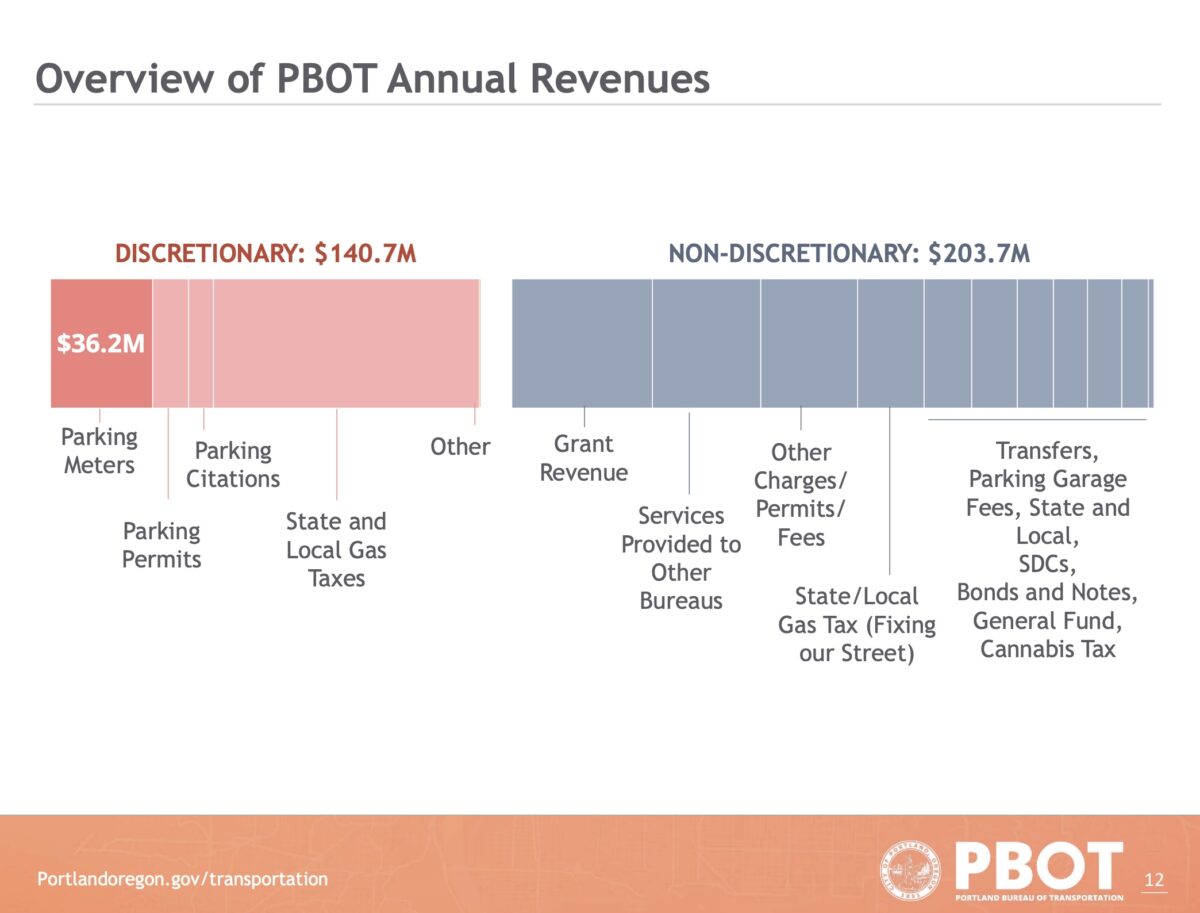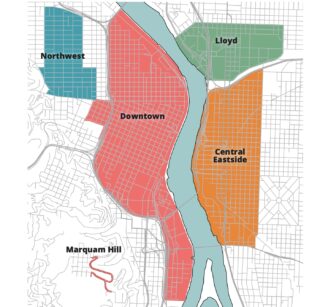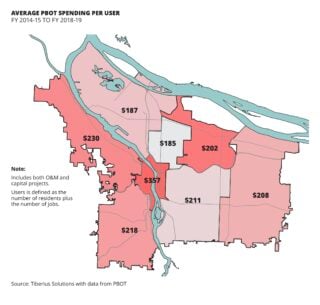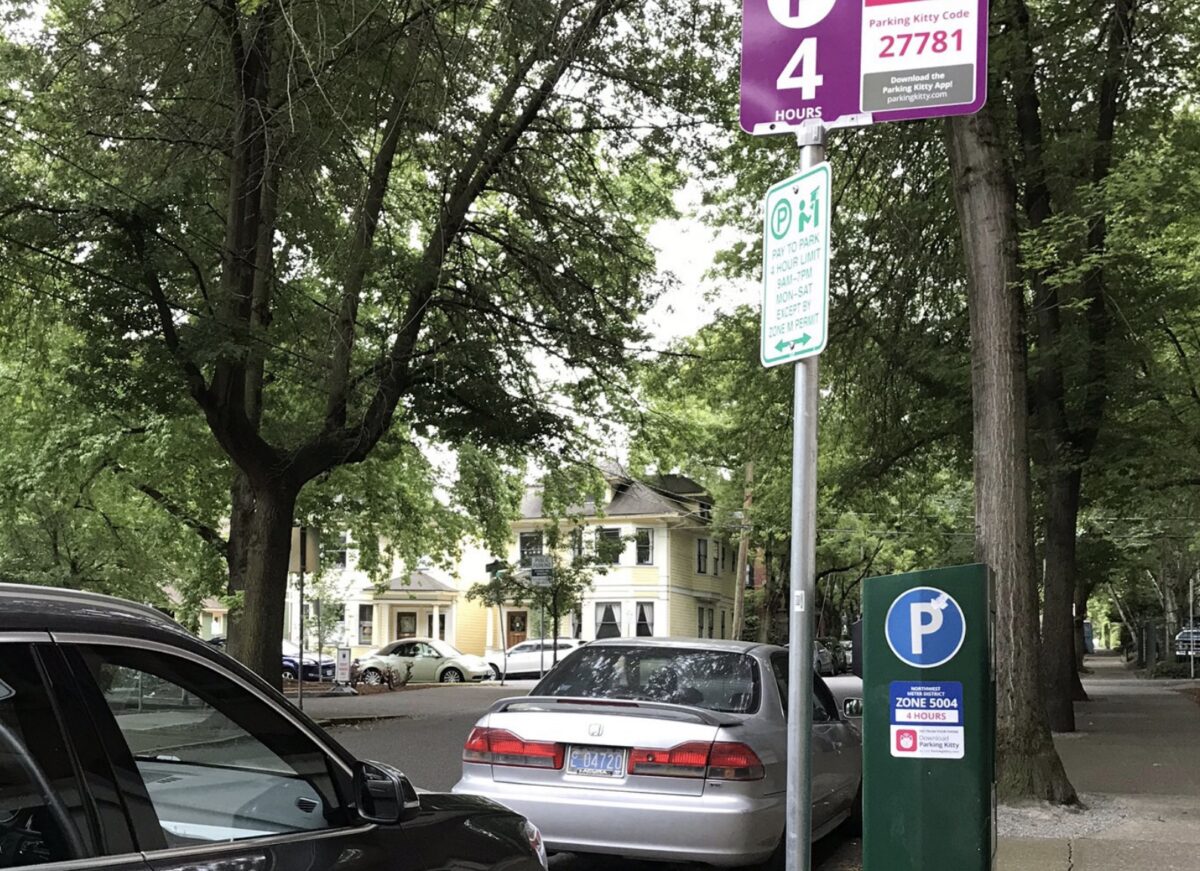The simple act of parking a car plays an outsized role in budget and policymaking at the Portland Bureau of Transportation. Parking-related fees make up a whopping one-third (around $50 million) of PBOT’s total annual discretionary revenue. That’s a problem for an already cash-strapped bureau that has adopted many policy goals that require them to reduce the amount of cars in the city.
At City Council Wednesday (9/22), commissioners will hear a presentation from PBOT about that parking meter revenue. PBOT will ask them to accept their Net Meter Revenue Policy Report that was made final earlier this month. “Net meter revenue” is the amount of funding that flows into city coffers from parking fees after they’ve done required maintenance on parking meters and paid staff to operate and maintain the system. The recommendations in the report are the product of a process that began in early 2019 with a goal to review Portland’s transportation planning rule TRN 3.102 (“Parking Meter Revenue Allocation Policy”) that was passed way back in 1996.
Priorities and principles at PBOT have changed a lot in 22 years, so many felt it might be time to change how parking meter revenue is doled out and re-assess its role in city decisionmaking. With millions of dollars in revenue at stake, and a chance to influence the number of driving trips (which play a critical role in our fight against climate change), this wonky sounding report has far-reaching implications.
Advertisement


“This amendment also offers an opportunity for Portland to make a clear statement of where SOV [single-occupancy vehicle] trips fall on our transportation mode hierarchy.”
— André Lightsey-Walker, The Street Trust
The Street Trust thinks the recommendations in the report left out one key opportunity. In a letter to Mayor Ted Wheeler and the commissioners they request an amendment that would, “Ensure the Net Meter Revenue policy update directly supports a wider array of Portland’s street users”. Specifically, they want some of the net meter revenue proceeds to fund free transit for low-income Portlanders who live in metered districts (one of the stipulations in the current rule is that 51% of meter funds are invested back in the district they’re gathered in).
By providing low-income residents of these districts with free transit we will be able to support Portland’s equity and climate goals,” reads the letter written by The Street Trust Policy Transformation Manager André Lightsey-Walker. “This amendment also offers an opportunity for Portland to make a clear statement of where SOV [single-occupancy vehicle] trips fall on our transportation mode hierarchy.”
Other advocates had more critical words to share about the report.

Before I get into those, it’s important to understand that Portland has five parking meter districts (above): Downtown, Northwest, Lloyd, Central Eastside, Marquam Hill. The Downtown District was created in 1938, accounts for about $30 million of the $36 million in parking meter revenue collected by PBOT each year, and is not beholden to the 1996 law referenced above. That means that big chunk of revenue doesn’t have the same strings and accountability as revenue from the newer districts. The revenue goes into the General Fund and advocates aren’t able to easily direct it to projects and programs that would reduce car trips.
Through this policy review process, PBOT had a huge opportunity to change these rules. Unfortunately they didn’t.
“This policy proposal maintains the status quo [downtown], in regards to allocation of net meter revenue,” the report reads. “It is recommended the downtown parking meter district continue to be exempt from the Net Meter Revenue Policy.”
That irked at least one source who contacted us about the report. “If PBOT’s top two priorities per the Strategic Plan are confronting racial equity and climate change, this policy is wrong on both fronts by continuing to enrich the status quo of private business groups, while not providing TDM [transportation demand management] funds to the densest neighborhoods, where TDM options and management are needed most.”

In the report PBOT says an analysis of per capita transportation spending (above) shows the central city already receives ample investment — about 1.5 times more than any other neighborhood coalition area. PBOT said “conversations with downtown stakeholders supported this conclusion”.
At least one downtown stakeholder disagrees. A letter sent to City Council members from the Pearl District Neighborhood Association dated September 21st expressed opposition to the report, “Because it does not go far enough in serving the multimodal transportation needs of the neighborhoods located in the downtown meter district, including its sizable number of low-income residents and employees.”
The PDNA wants the Downtown Meter District to be in the same boat as the other four district when it comes to rules governing how meter revenue is spent. In particular, they want downtown neighborhoods to do more to help manage transportation demand (read: fewer driving trips) and improve biking and walking infrastructure through things like the Central City in Motion plan, better TriMet bus service, and investment in PBOT’s successful “Transportation Wallet” program that provides transit and Biketown passes at a heavily reduced rate to district residents.
“Instead of using this process to harmonize parking management practices across the city and place the Downtown Meter District in parity with newer parking districts, PBOT has reneged on its commitment and chosen instead to maintain a two-tiered system whereas downtown neighborhoods are punished simply for being first,” the PDNA letter states.
The PDNA also chides the report for not creating new parking districts on eastside commercial corridors like 28th Avenue, Hawthorne, Mississippi, Alberta, and Hawthorne. “We are sincerely disappointed by the lack of tangible solutions documented in this effort,” says the PDNA.
You can watch the council presentation and discussion on the City of Portland YouTube channel.
— Jonathan Maus: (503) 706-8804, @jonathan_maus on Twitter and jonathan@bikeportland.org
— Get our headlines delivered to your inbox.
— Support this independent community media outlet with a one-time contribution or monthly subscription.


